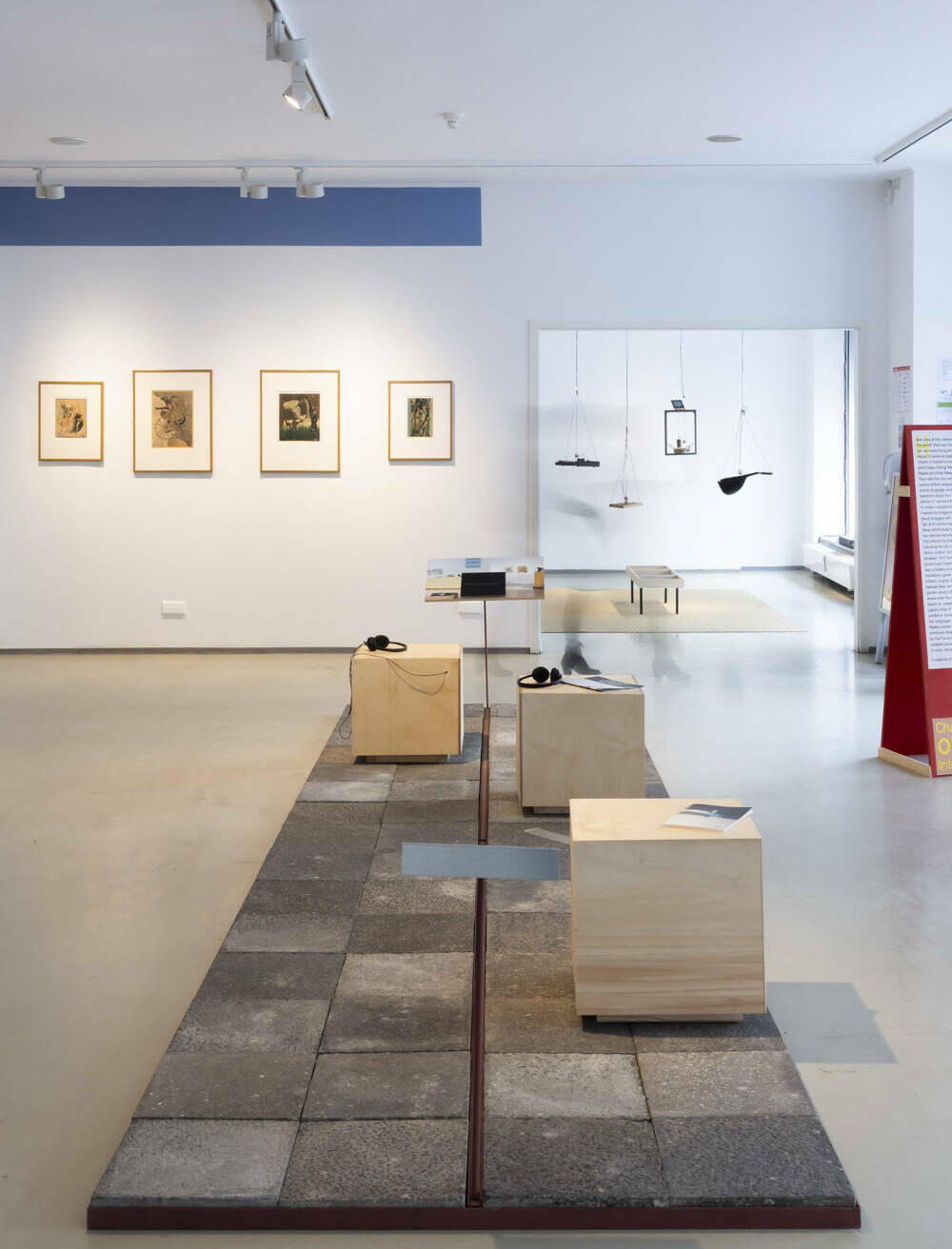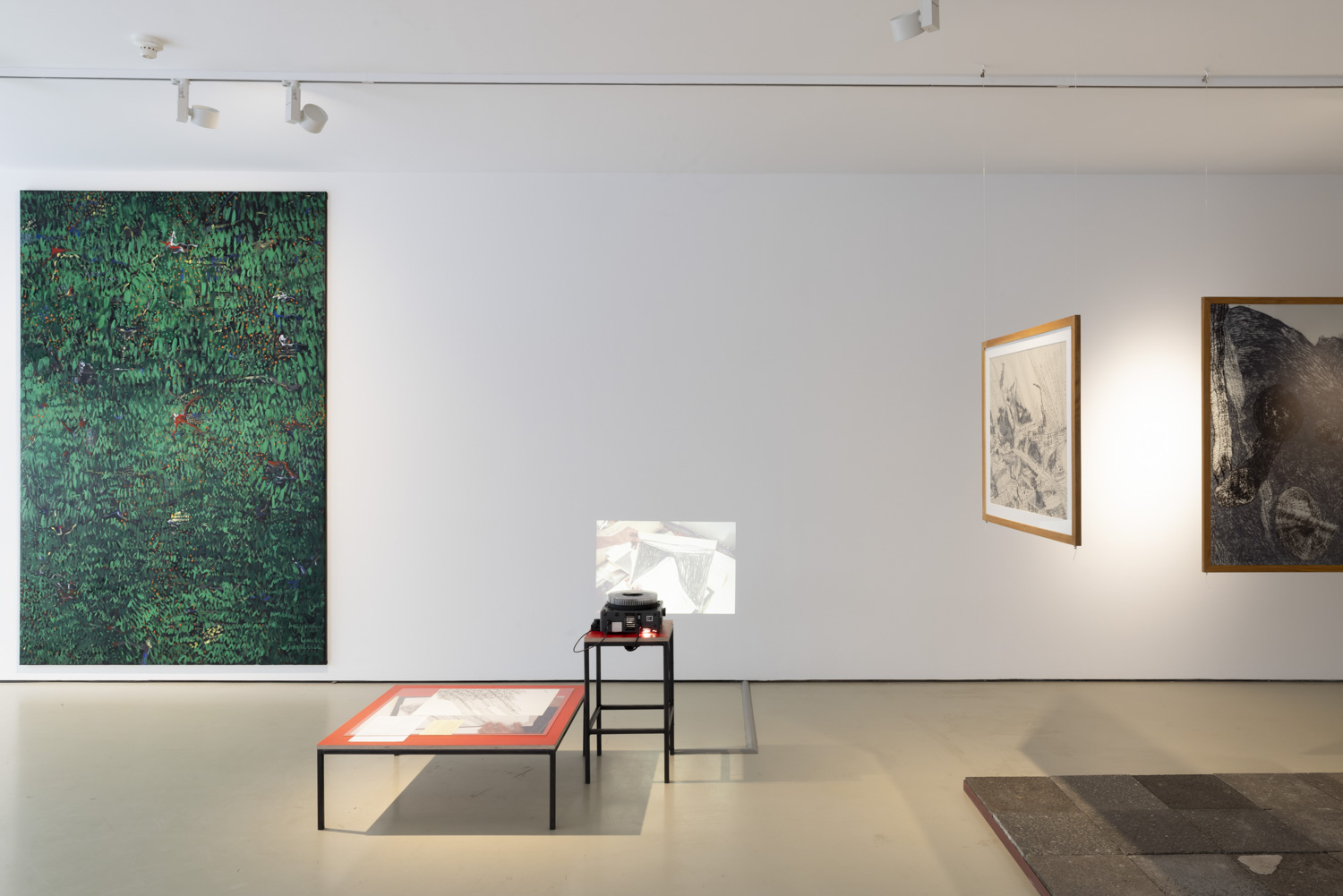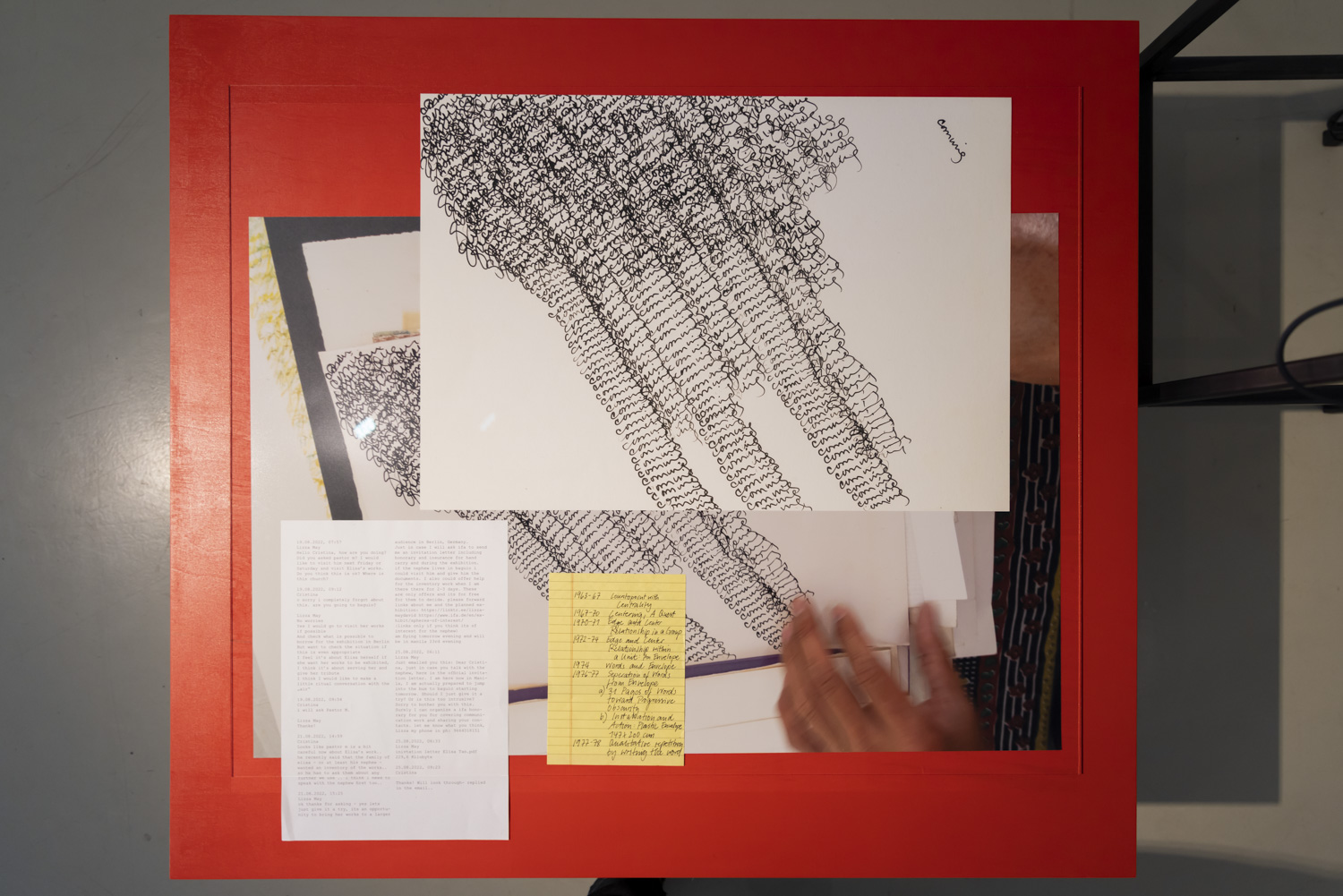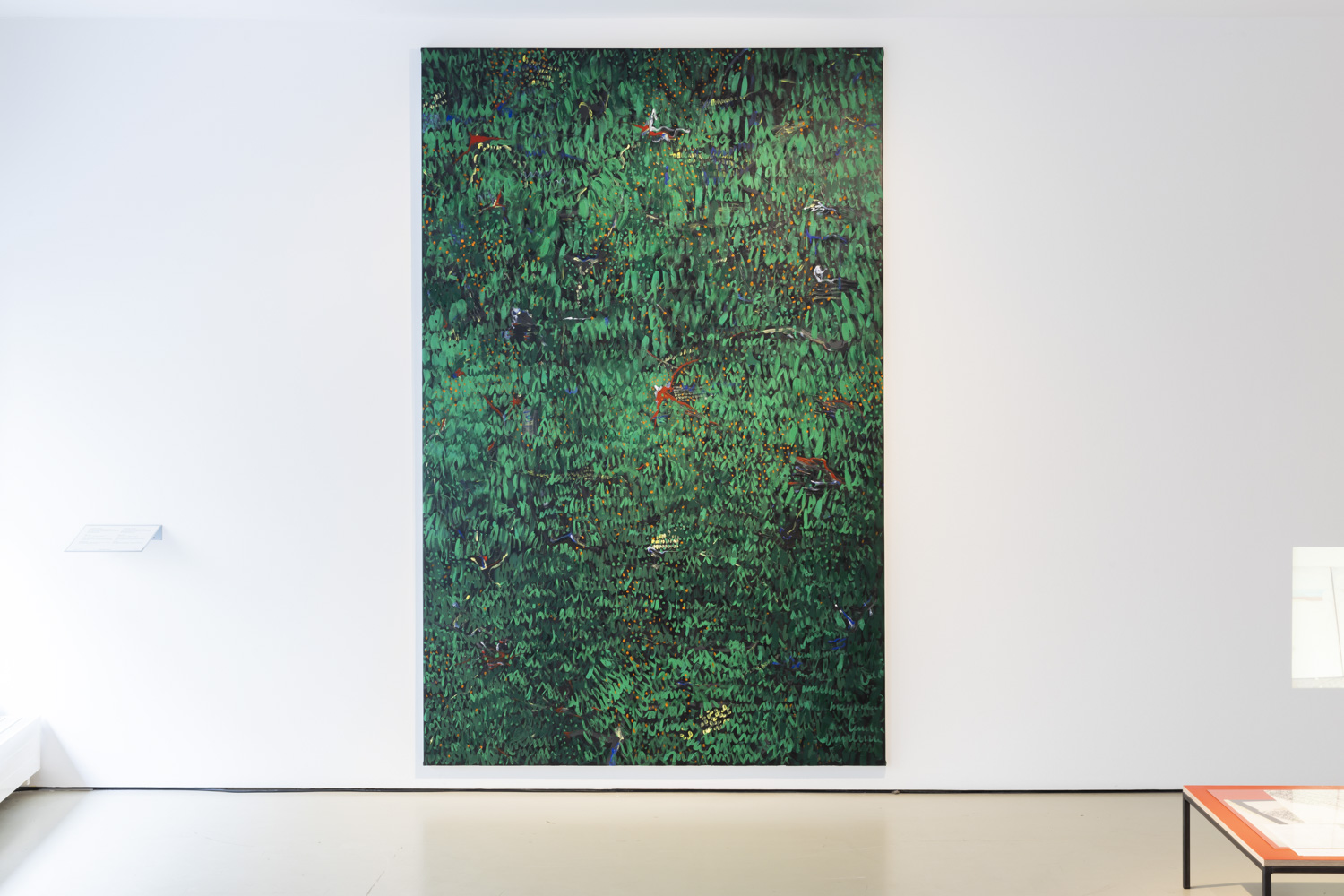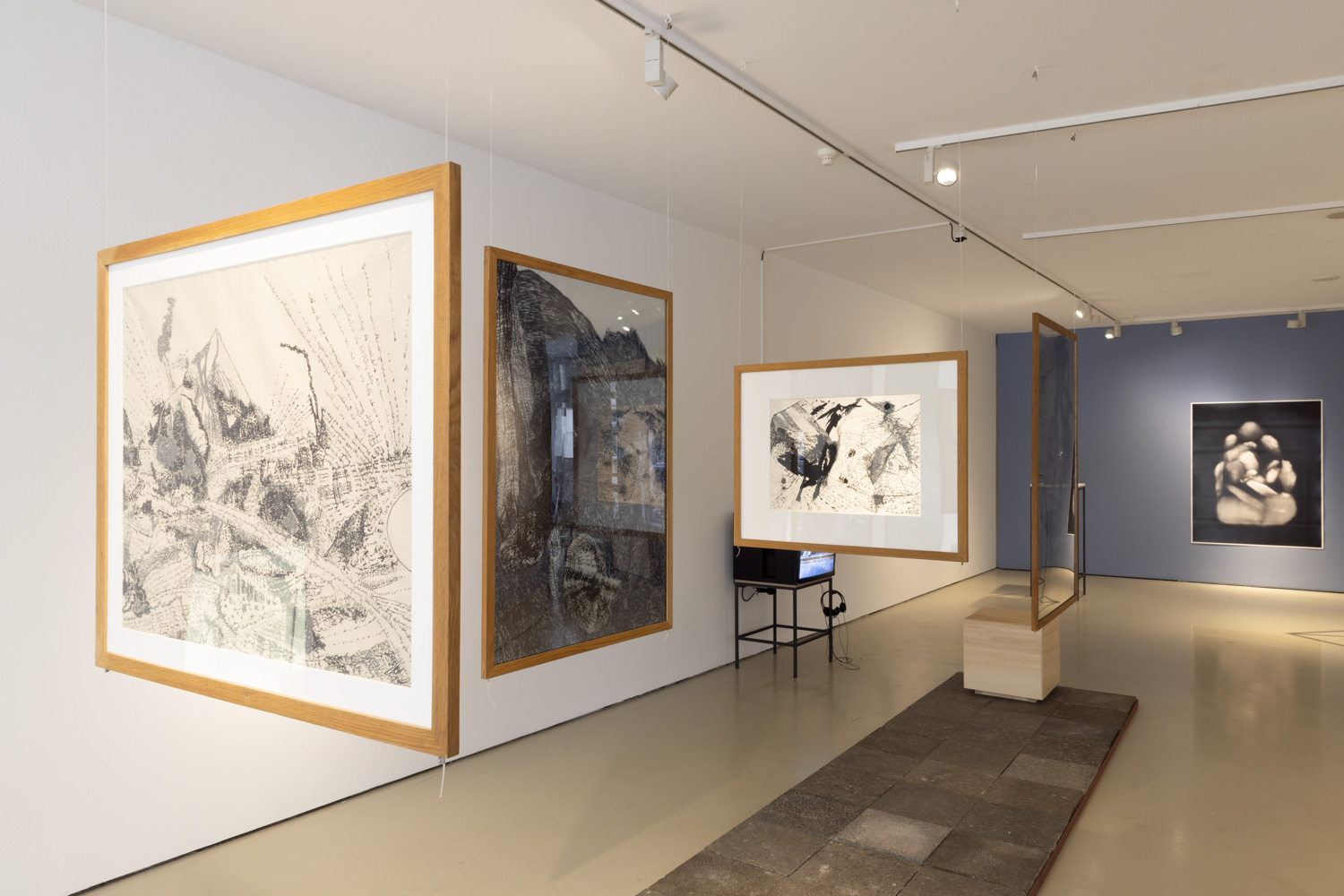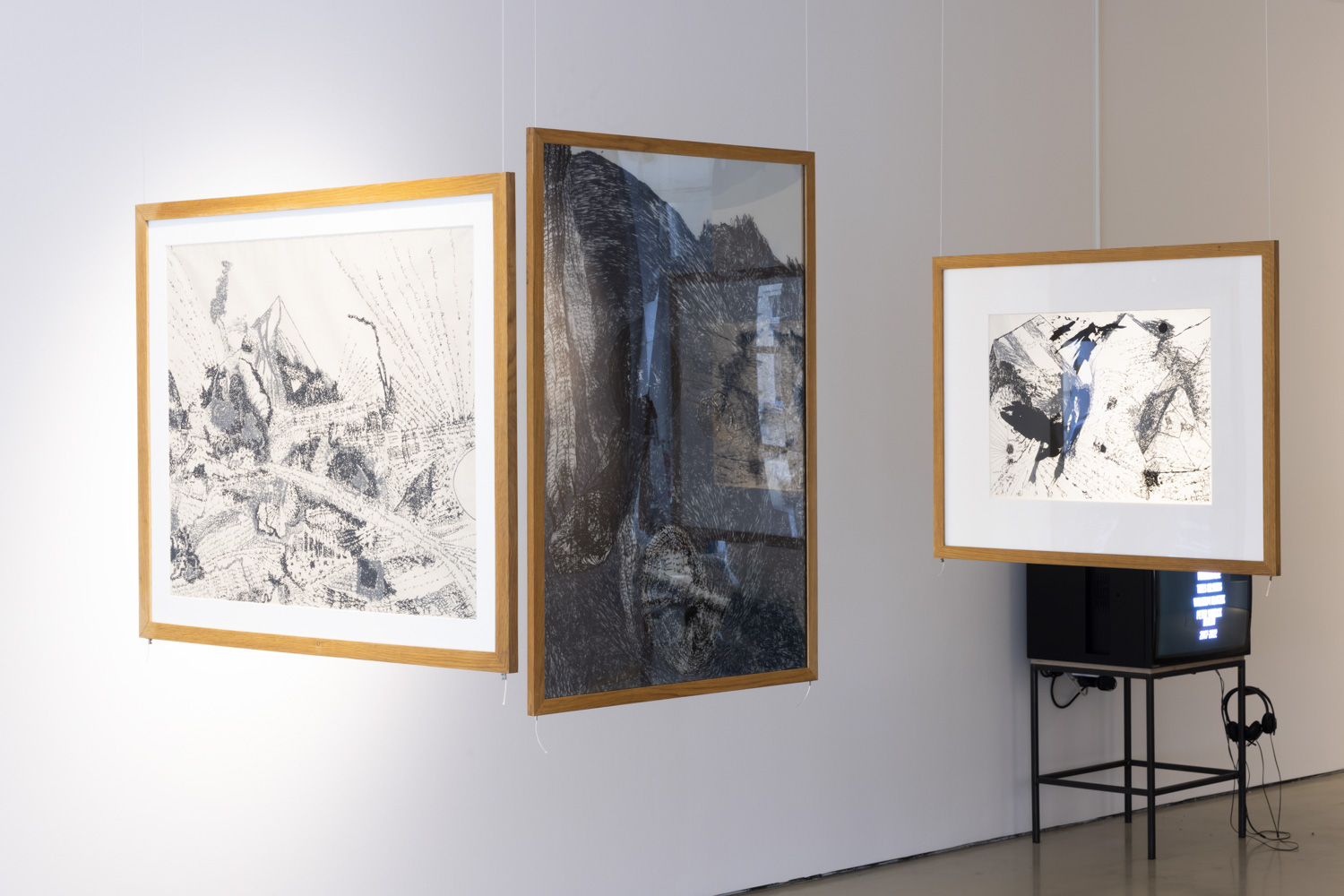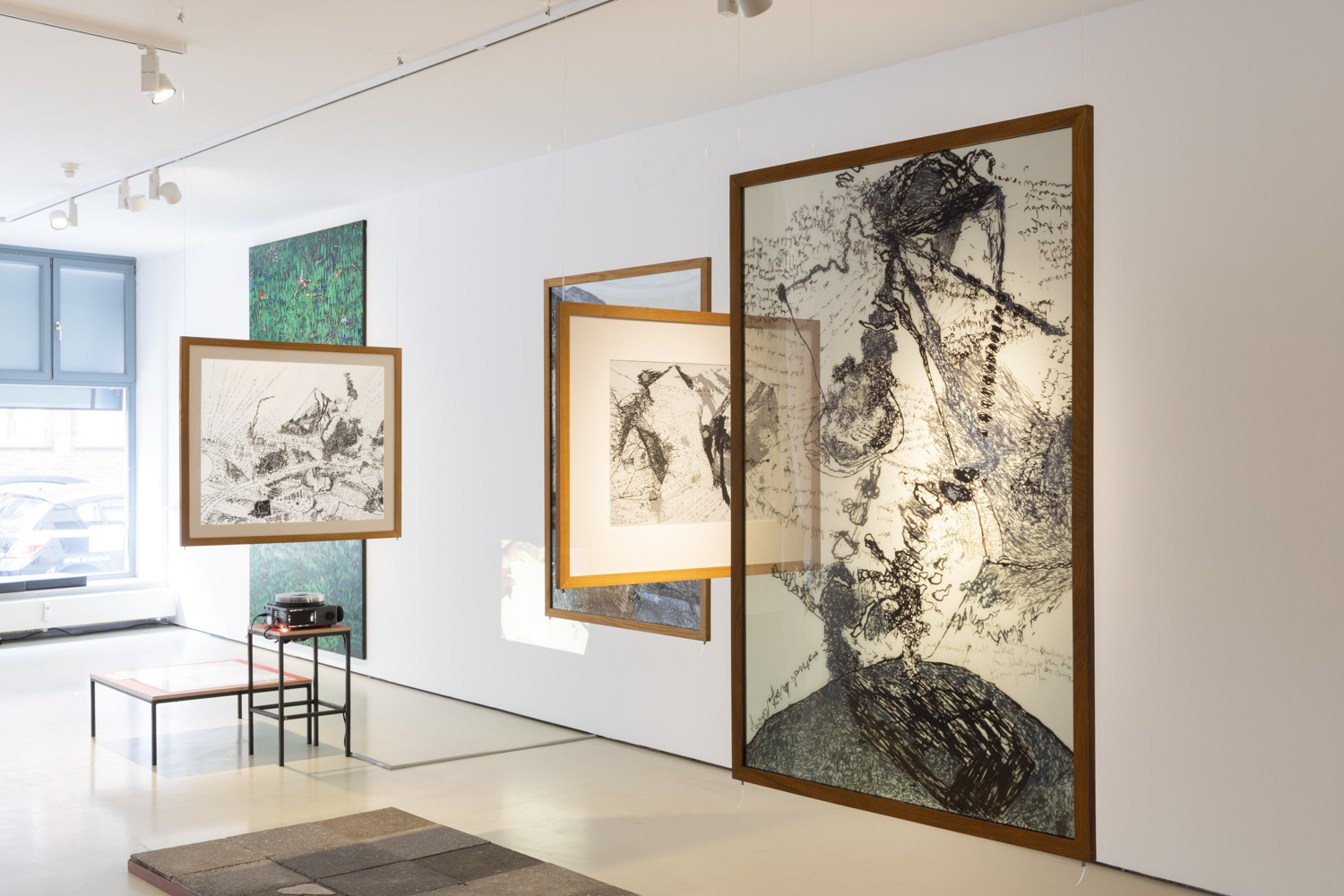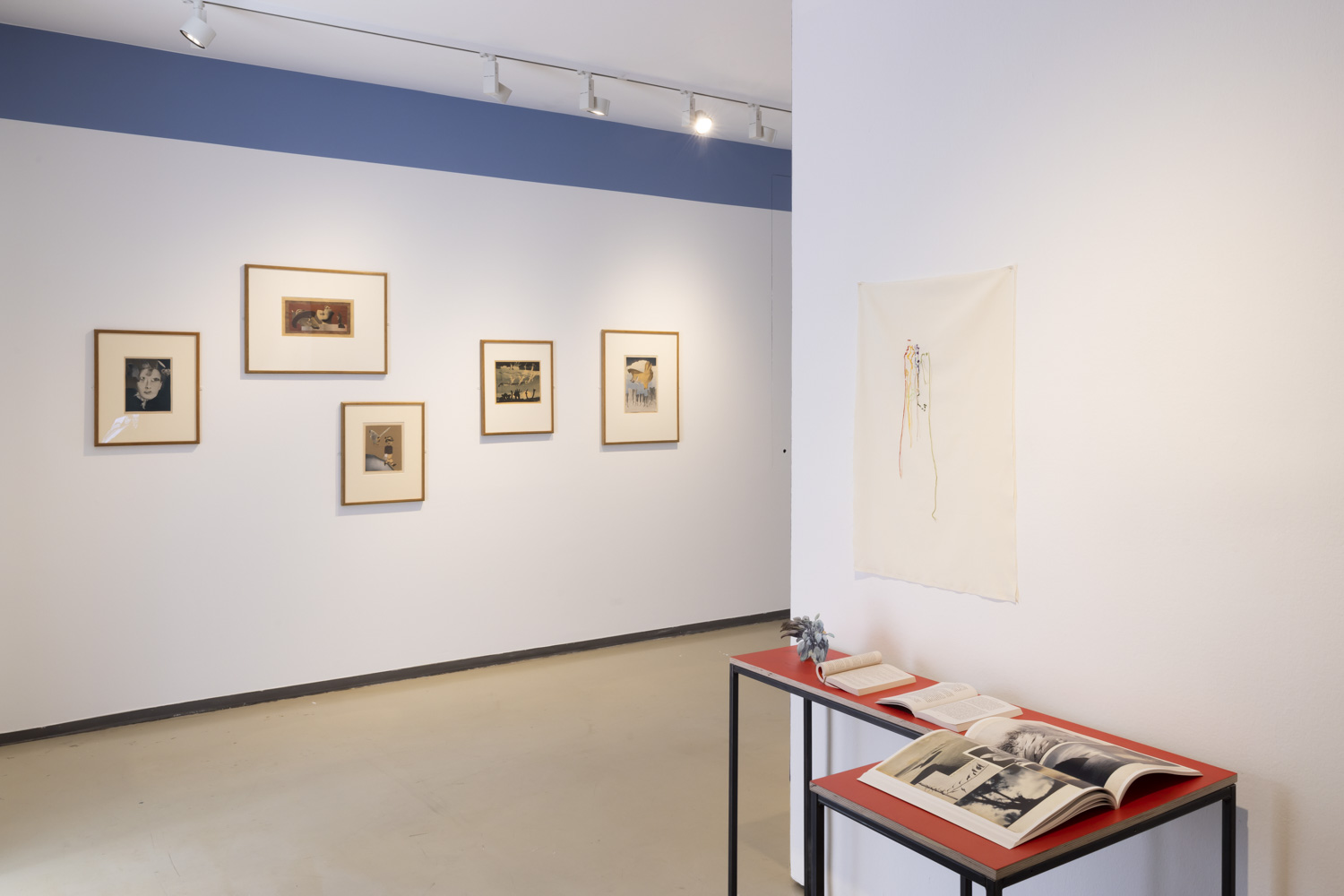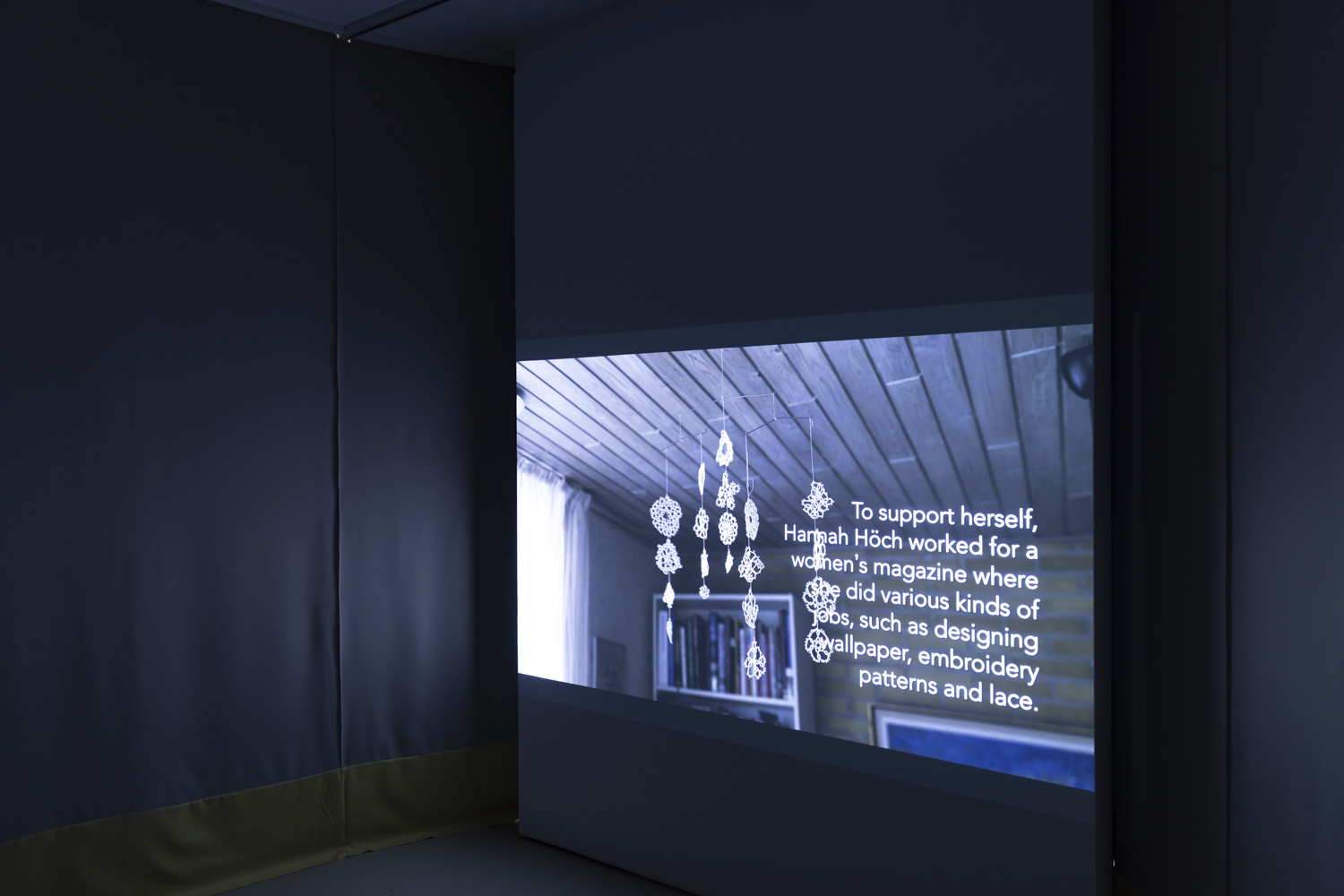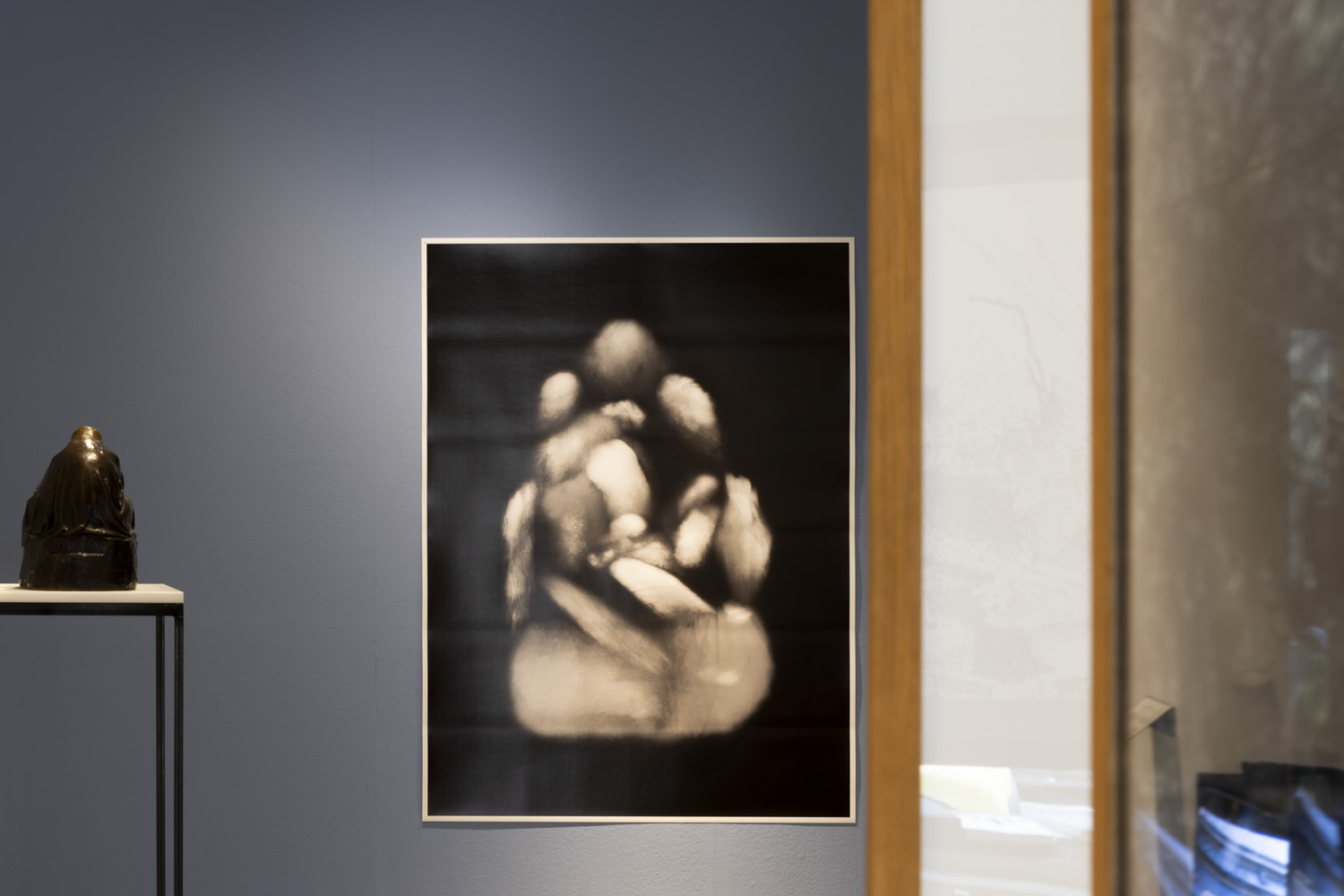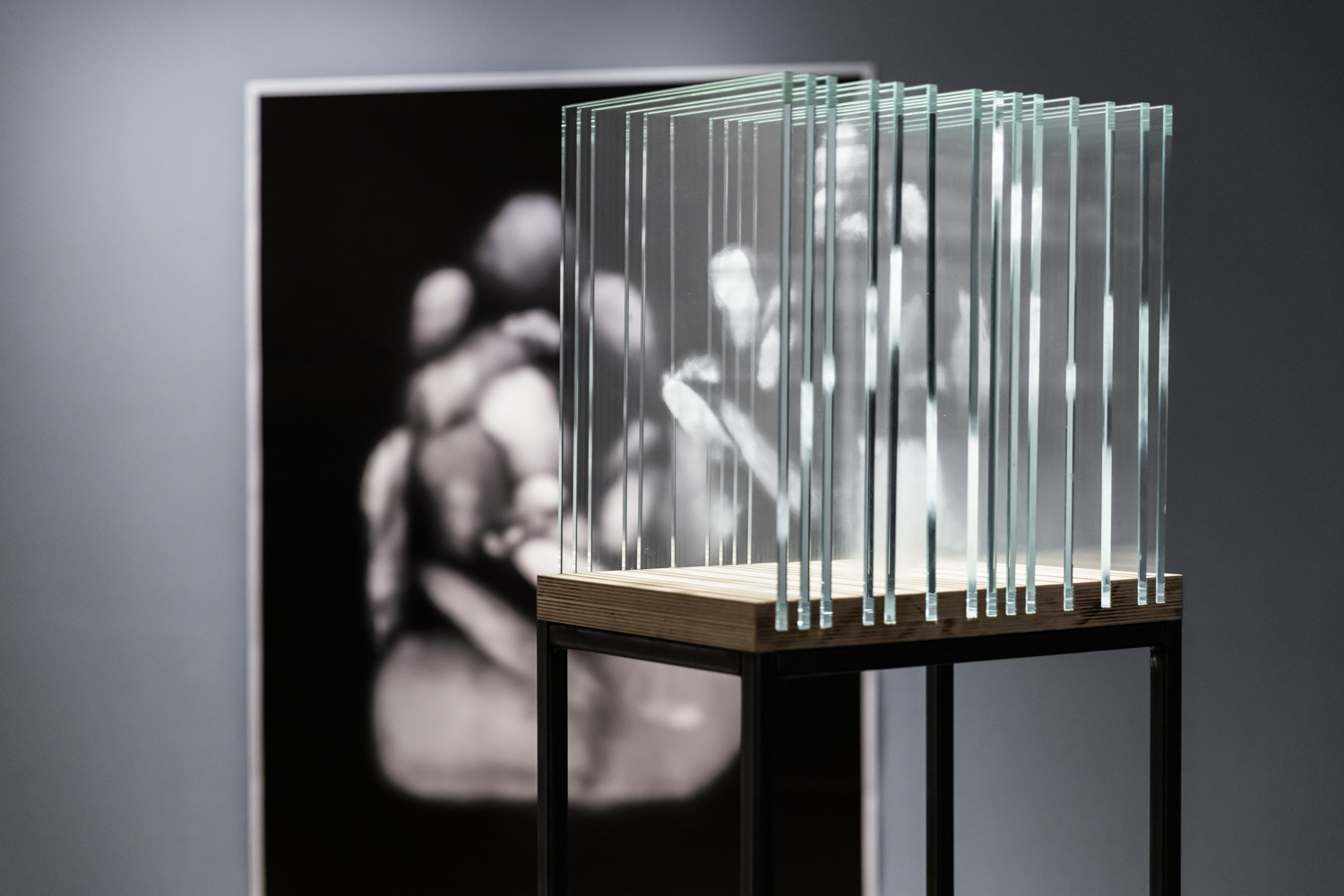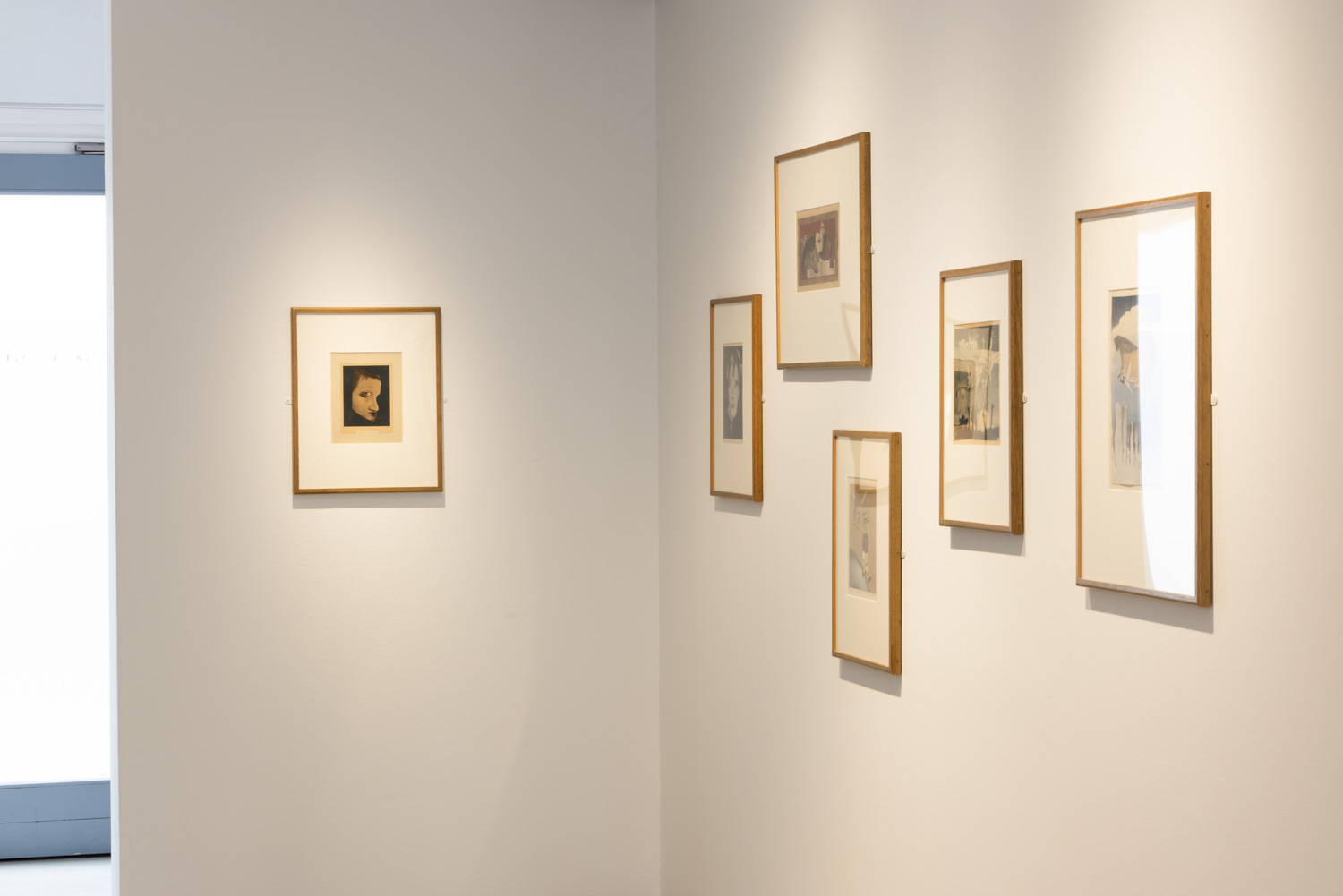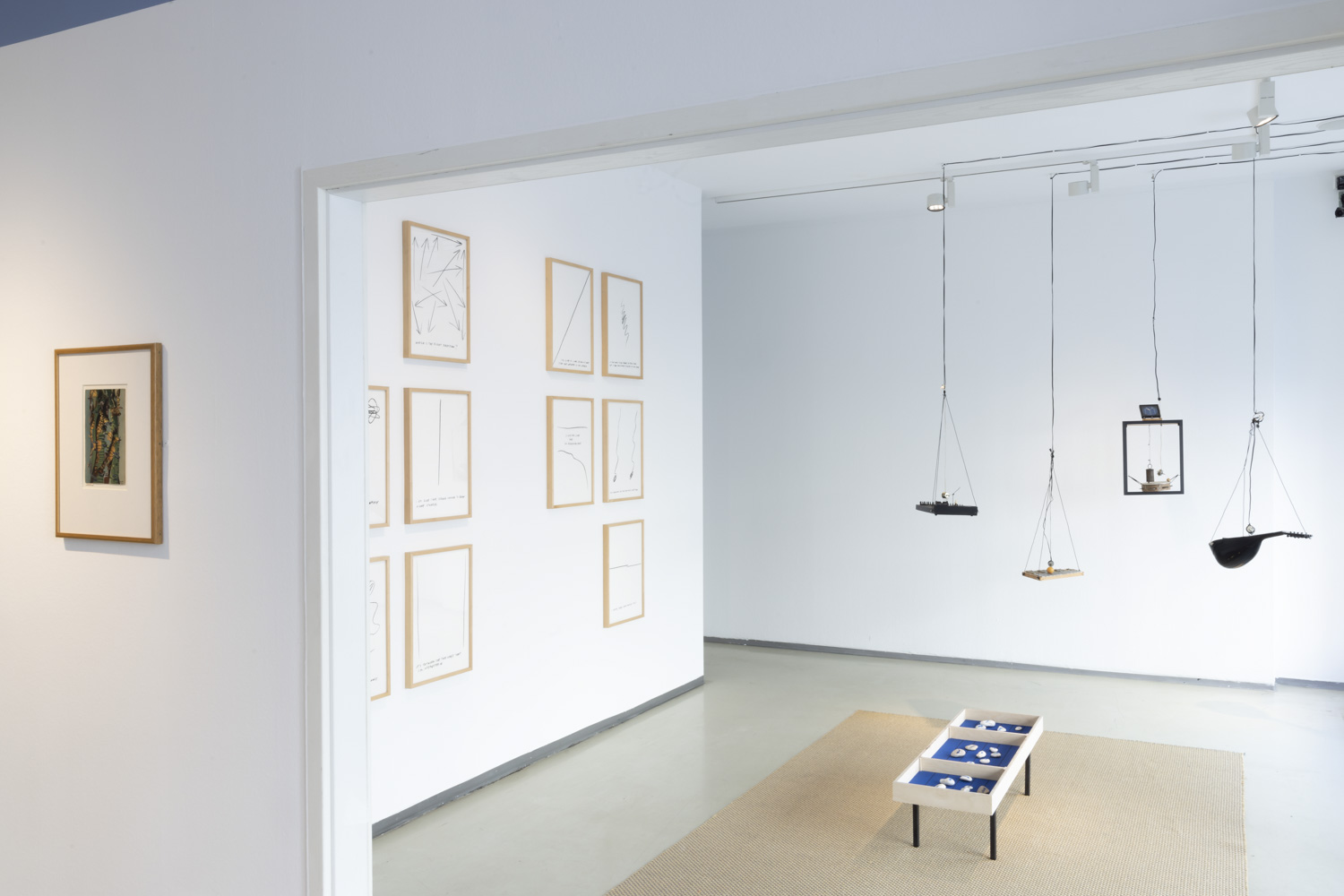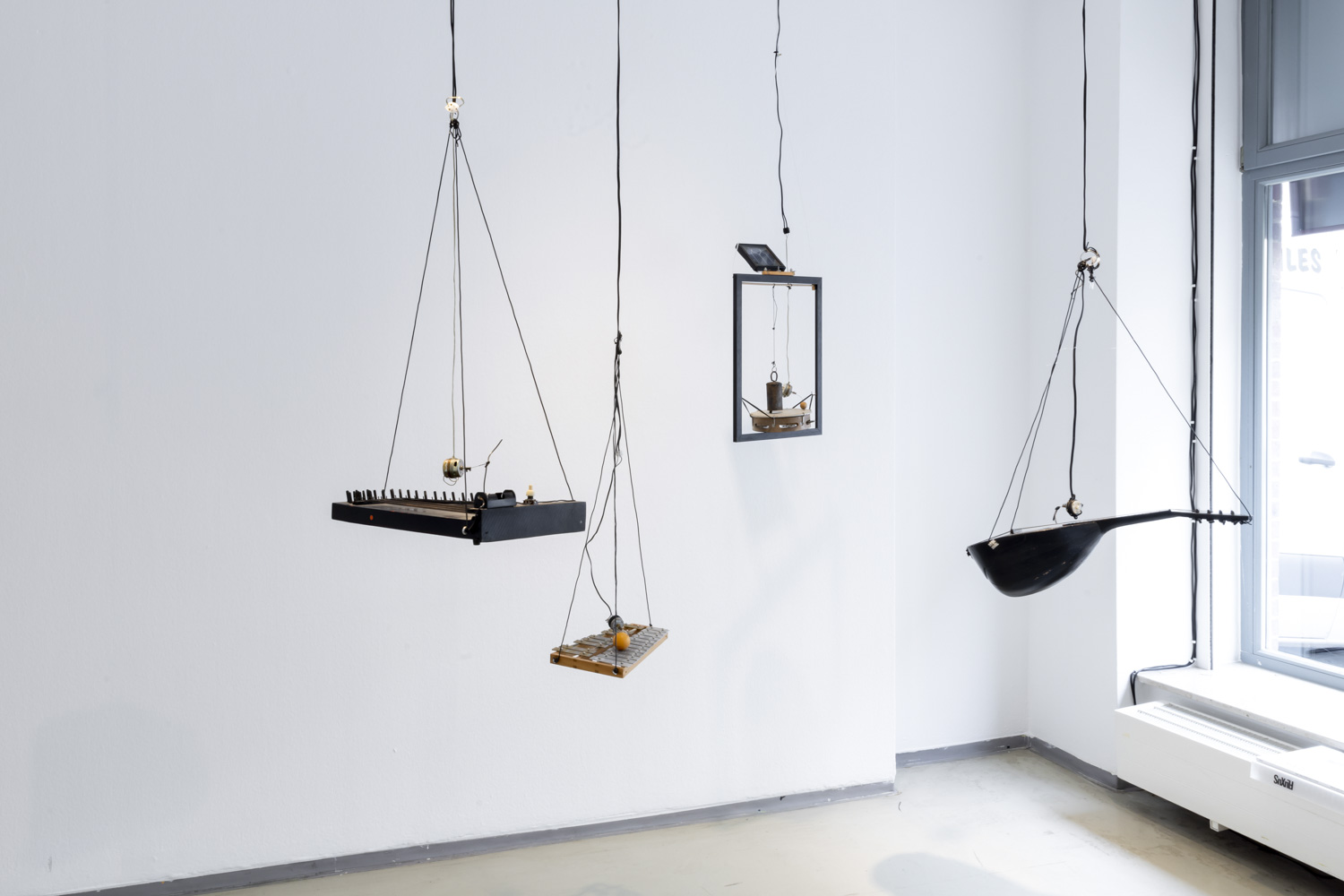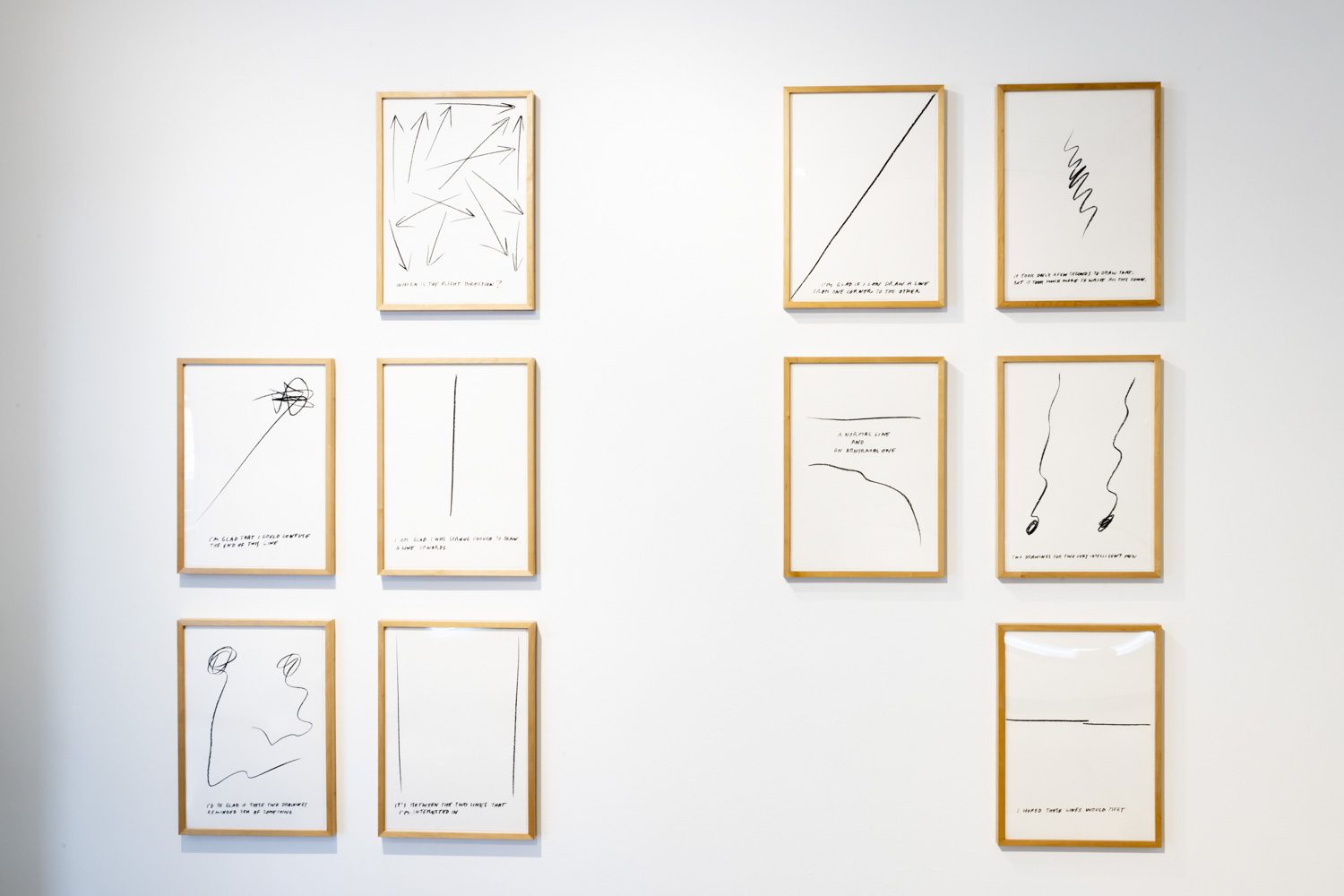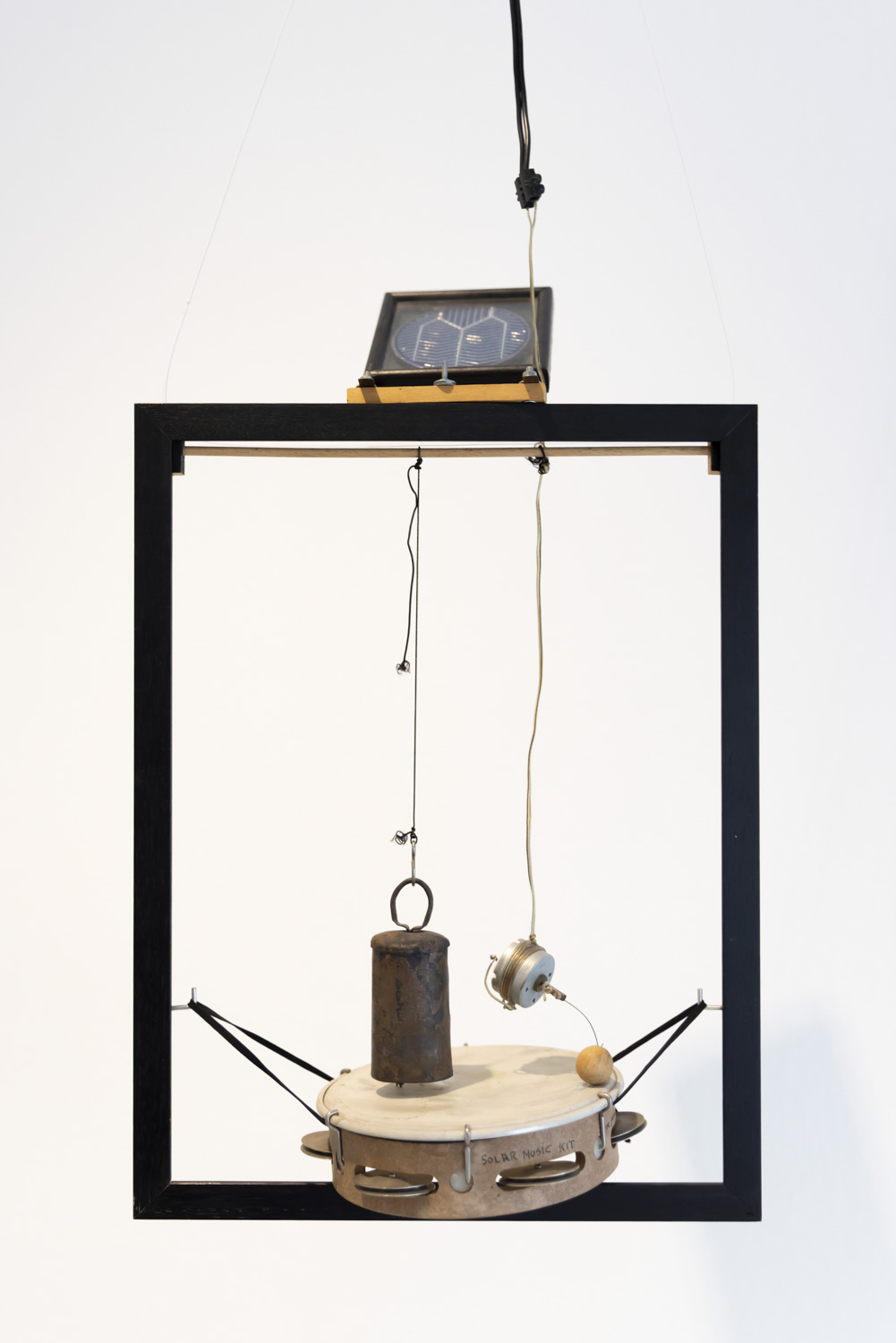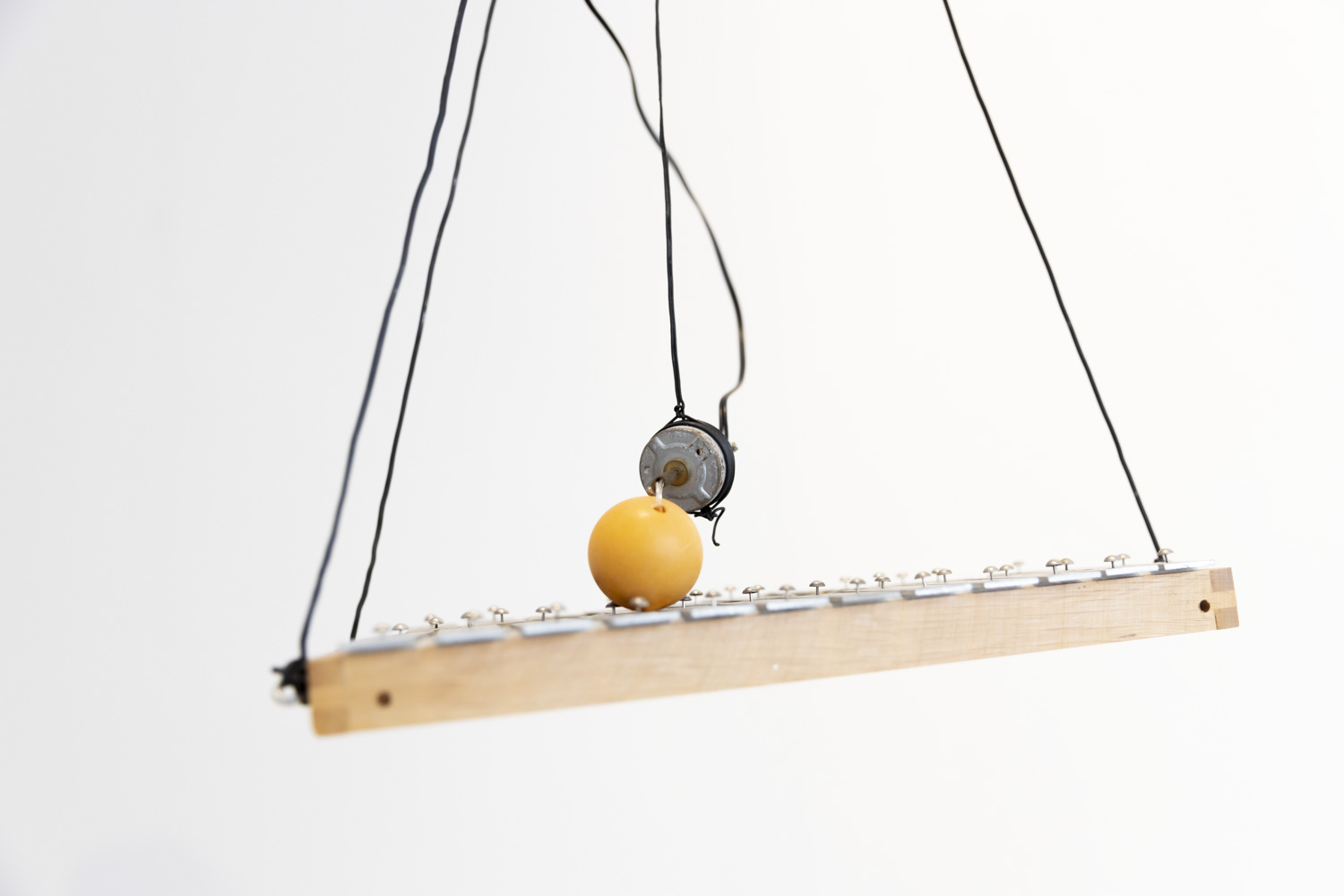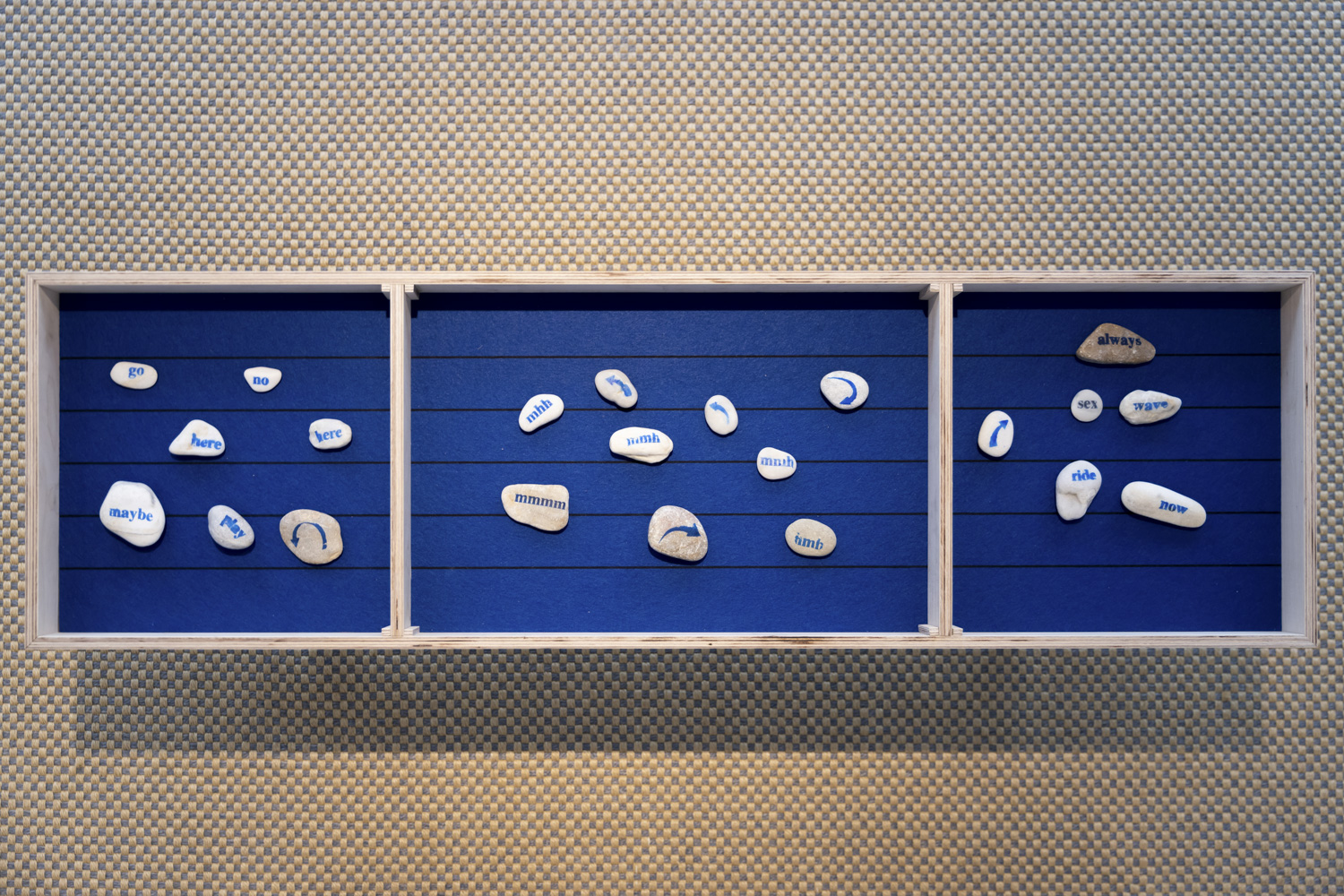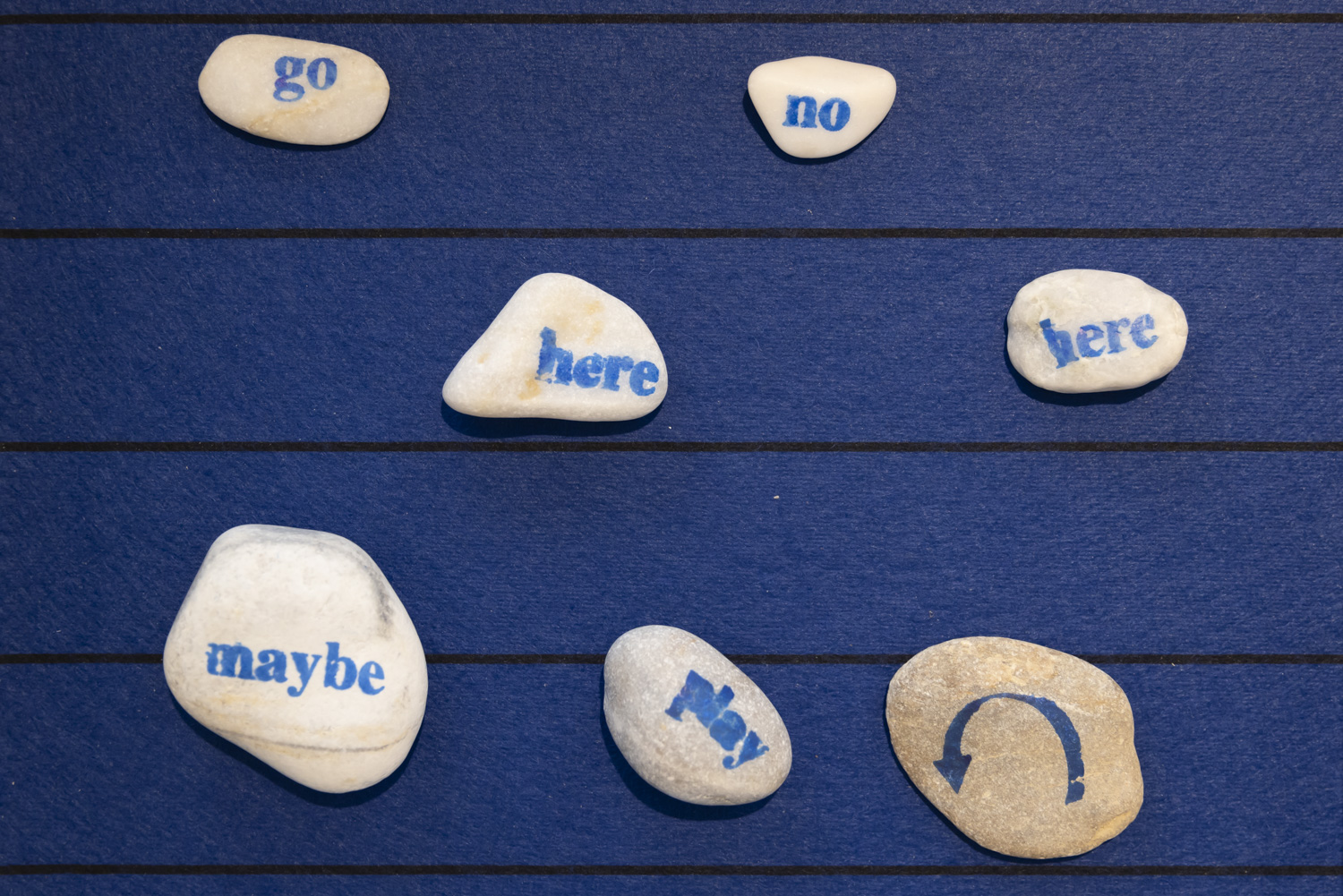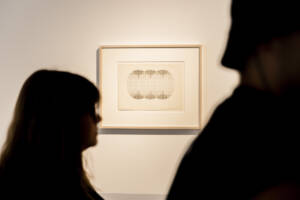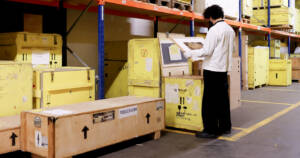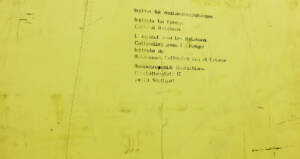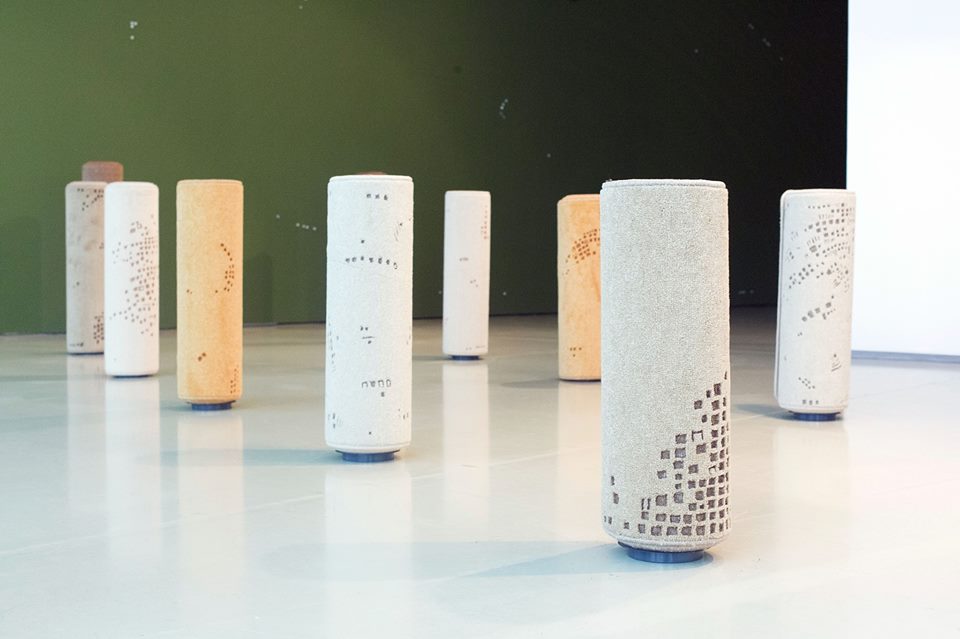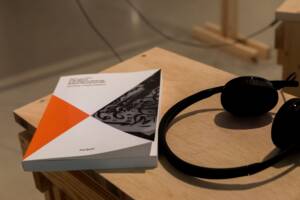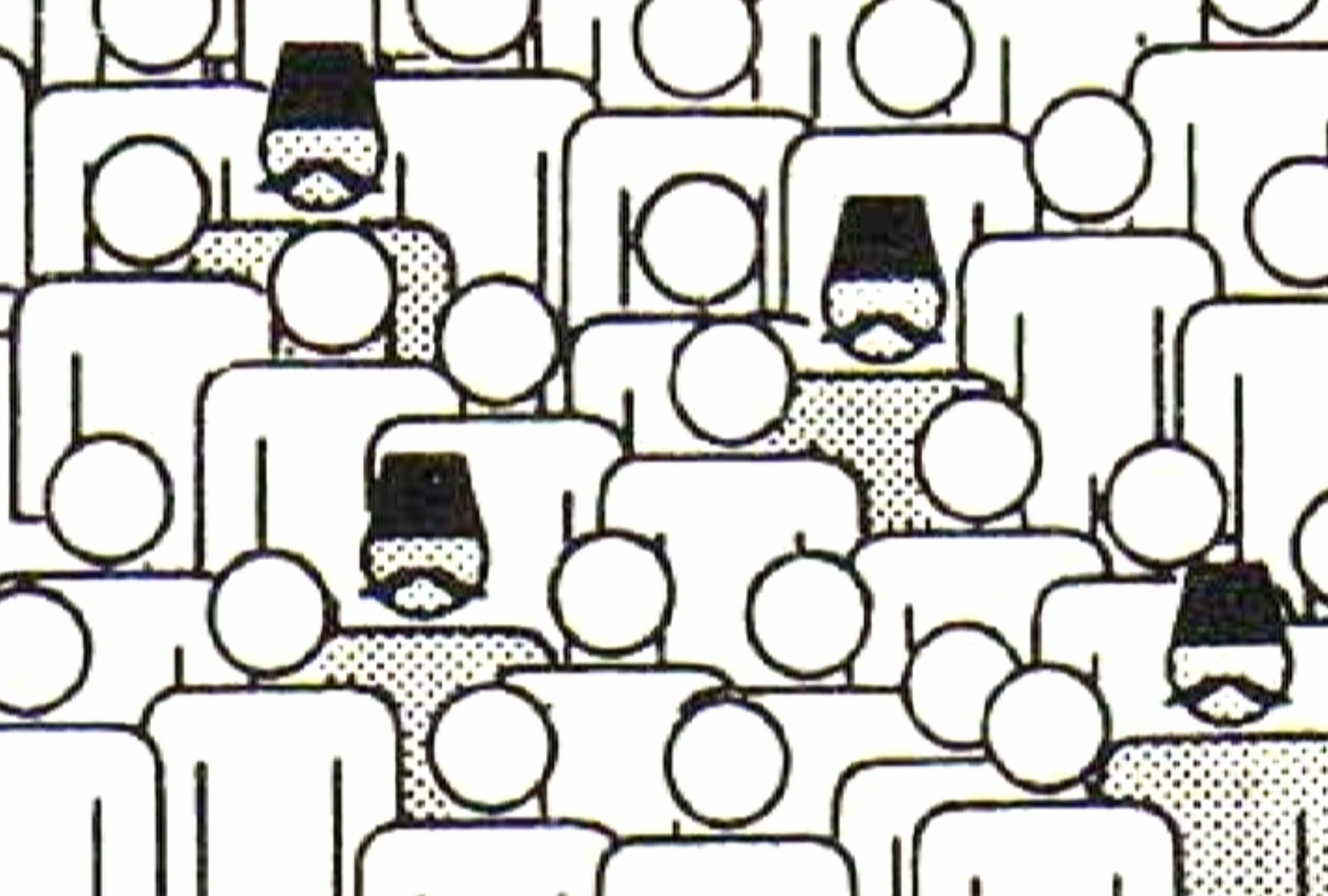In the exhibition Chains of Interest, Isaac Chong Wai, Lizza May David, Wilhelm Klotzek, Ofri Lapid, Adrien Missika and Gitte Villesen continue their personal explorations of the ifa art collection.
Since Fall 2021, they have investigated the collection through their own artistic practices. In the preceding exhibition Spheres of Interest, the artists activated and contextualised selected works from the collection in performative and narrative approaches. Their selections offered a critical and humorous look at the collection’s unique history. The artists discovered and illuminated omissions and political entanglements, while also drawing numerous new connections between the selected artworks.
Chains of Interest is the second part of this artistic-curatorial investigation intended to deepen the artists’ relationships with the ifa collection. They take the floor with newly developed works of their own featuring various artistic languages, attitudes, and environments expressed in film, sound, language and playful performance. The exhibition moves from phrase to image to thought all the way to action, connecting them all in a polyphonic score of voices.
With works by Isaac Chong Wai, Carlfriedrich Claus, Lizza May David, Hannah Höch, Joe Jones, Wilhelm Klotzek, Käthe Kollwitz, Ofri Lapid, Adrien Missika, Elisa Tan, Endre Tót, Gitte Villesen
Motivated by the unused print drawer labelled “Asia” at the ifa depot in Stuttgart, Lizza May David decided to present the textual-visual works of Chinese-Filipino artist Elisa Tan in the exhibition, symbolically occupying this unfilled space. Tan’s “containers for thought” show imagined, inscribed, dancing landscapes, recalling the linguistic terrains of Carlfriedrich Claus, which estrange the viewer from familiar ways of seeing, writing, and reading. David’s paintings are surrounded by sonorous mmmms inspired by indigenous songs and myths from two distant Pacific coasts in Mexico and the Philippines.
Gitte Villesen has edited a new film entitled Strings and Berries. The film uses Hannah Höch‘s collage Seidenschwanz, the title of which refers to the Bohemian waxwing bird but literally translates to “silktail”, as the beginning of a chain of associations. The waxwing is seen weaving through various gardens and times, touching on notions of gender roles and references to the two Black feminist writers Octavia Butler and bell hooks. In the course of the film, Villesen arrives at Hannah Höch’s house and garden in Berlin’s Heiligensee district, where she settled two weeks after the outbreak of the Second World War. Höch used the remote location to hide documents and artworks by her friends – artists banned by the NS regime.
In Wilhelm Klotzek’s work, unique encounters between language and space take place against the tragicomic backdrop of everyday life. His humorous approach creates a specific onomatopoetic language that he bends and stretches in different directions. The artist’s practice is closely linked to that of Carlfriedrich Claus, who was part of the critical avantgarde in the GDR (German Democratic Republic). In the early 1990s the ifa compiled Denklandschaften, a touring exhibition of Claus’ work that helped him reach an international audience. For Chains of Interest, Klotzek has selected several of Claus’ transparent “language sheets”, juxtaposing them with his photo film DHM (German Historical Museum). The photographs from the archive of Peter Woelck and Christine Klotzek reflect his childhood in East Berlin and his adolescence during the years following the fall of the Berlin Wall. His off-screen commentary describes how history is short-circuited in museum exhibits, contemporary art, and dreams.
For Spheres of Interest, Ofri Lapid initiated a complex chain of translations based on Joseph Kosuth’s lexical work Titled (Art as Idea as Idea), which follows the itinerary of the touring exhibition Kunstraum Deutschland since 2000. Her polyphonic performance of the same name featured over 30 speakers. Drawing from within this linguistic chaos, she has created a new audio work for Chains of Interest. In a process resembling the “telephone game”, Kosuth’s terms are translated from one language into the next according to the Kunstraum Deutschland route, resulting in a deconstruction of the terms “meaningless”, “purple”,and “volume”. This verbal estrangement provides a critical distance from Kosuth’s black and white language-based works, while also offering glimpses of the languages spoken at over 30 different exhibition locations.
The Käthe Kollwitz sculpture Pietà shows a mother protectively holding her dead son. Moved by Kollwitz’ self-portrait, Isaac Chong Wai considers its copy, four times the size of the original, at Berlin’s Neue Wache, a historic edifice where the sculpture has served as a memorial to “Victims of War and Tyranny” since 1993. What is the effect of this increase in scale? How does the perception of the sculpture change when it becomes an expression of state mourning and remembrance? Retracing the sculpture with his breath, Wai creates a new installation in dialogue with the Kollwitz original (1937-1939), featuring a glass sculpture and a photograph that give form to the fragility of life.
Adrien Missika’s MOTUS was a mobile museum on two wheels that both presents and activates his selection of Fluxus works in public. In the new exhibition Missika connects Endre Tót’s poetic series of Very Special Drawings with the mechanical musical instruments of Joe Jones. Surrounded by the two Fluxus artists’ minimalistic sounds and drawings, Missika invites his audience to participate in a game of syllables played with dice. Like an oracle, the words and sentences conjured by the dice make predictions about the future.
In Chains of Interest, the invited artists reflect on the effects of the ifa’s collecting practices, opening up a public conversation around German-German collections of art made in Germany.
Team
Head of ifa Gallery Berlin: Inka Gressel, Susanne Weiß, Alya Sebti (parental leave)
Curators: Inka Gressel and Susanne Weiß
Exhibition production: Stefano Ferlito
Project Management: Ev Fischer
Digital Communication: Anna Giannessi
Research ifa art collection and Agora: Maximilian Bauer, Sabiha Keyif
Exhibition set-up: Stefano Ferlito, Simon von Krosigk, Hippolyte Moulun, Keanu Sapadi, Bert Günther (AV-works)
Exhibition guards: Mila Cano, Kevin Dieke, Anna Ratcliffe
Texts: Inka Gressel, Susanne Weiß, Anna-Lena Wenzel
Translations: Moira Barrett
Design: Achim Reichert, ACHI.ME
Display: Wilhelm Klotzek
Production: Mona Kuschel (textile space), Pedro Moraes (metal work):
Press: Corinna Wolfien
Photo documentation: Victoria Tomaschko
